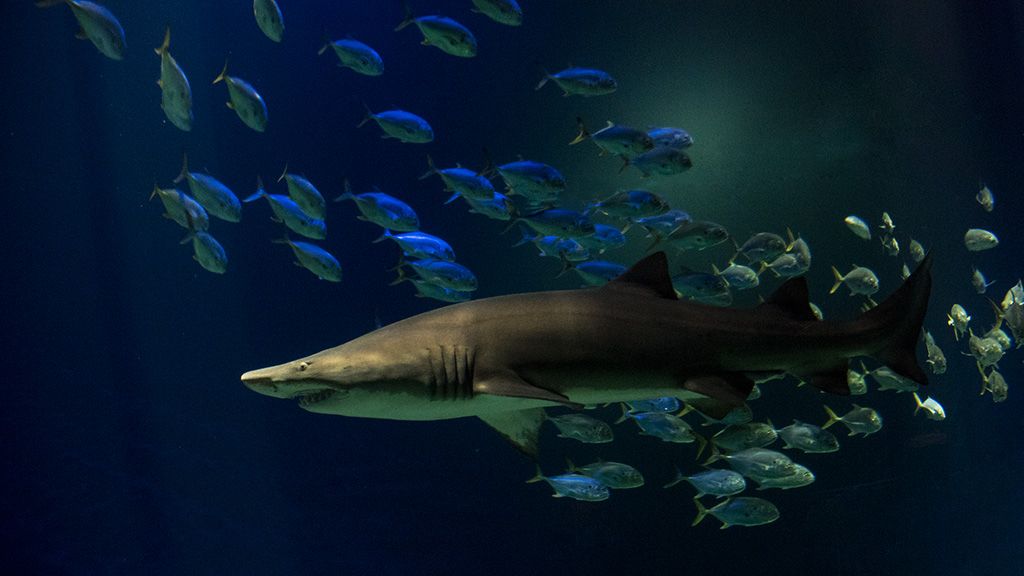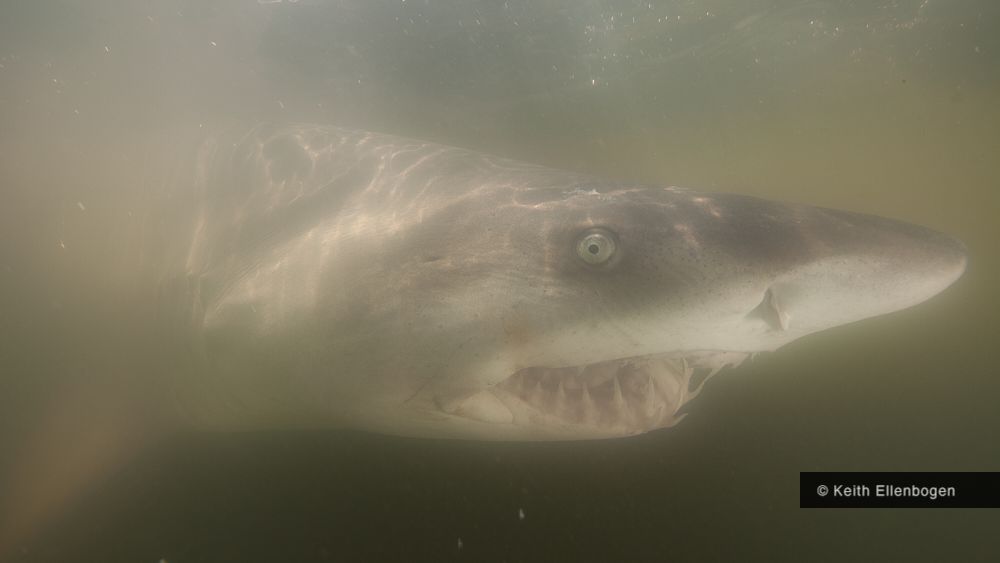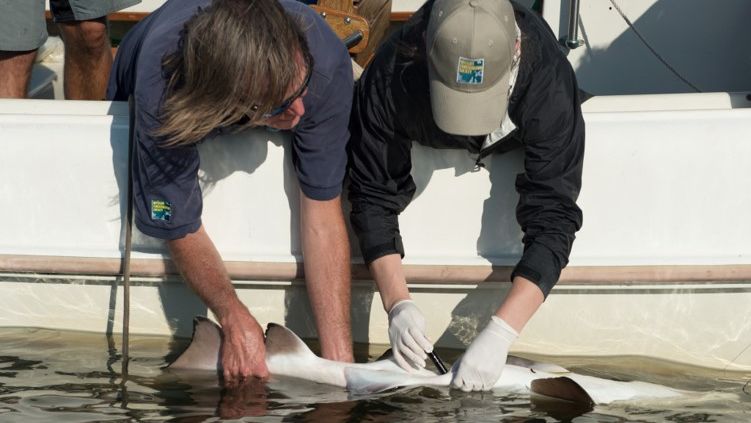Views and opinions expressed in blog posts are those of the individuals expressing them and do not necessarily reflect those of THIRTEEN Productions LLC/The WNET Group.

Sand tiger sharks can be found in the New York Aquarium and in New York’s coastal waters, where they are depleted but protected. WCS scientists are studying their movements, habitat use, and health. Credit: Julie Larsen ©WCS
Sand tiger sharks are top predators throughout their extensive range, which spans from the continental coasts of Australia, South Africa, the United States of America, the Southwest Atlantic and at least other 50 countries.
However, despite their importance in the trophic systems around the world, and their importance in tourism where abundant, the global population is assessed as Critically Endangered on the IUCN red list due to an estimated population reduction of more than 80 percent over three generations spanning 74 years.
As parties to the Convention on Migratory Species of Wild Animals gather this week in Uzbekistan for CMS CoP14, the governments of Brazil and Panama have jointly proposed the inclusion of the sand tiger shark onto CMS Appendices I and II – this step would mandate that CMS Governments fully protected the species wherever it migrates.

Sand tiger sharks can be found in the New York Aquarium and in New York’s coastal waters, where they are depleted but protected. WCS scientists are studying their movements, habitat use, and health. ©Keith Ellenbogen
Sand tiger sharks take part in complex migrations, often associated with seasonal and reproductive events, cyclically returning to the same breeding sites each time. However, while sharks in general mature later, and have lower reproductive rates than most bony fish, this growth rate is even lower in sand Tiger Sharks, making them extremely vulnerable to the impacts of human activities such as fishing.
These predators give birth to only two young, one per uterus, in alternate years due to its rare trait of embryos feeding on each other as they develop – these predators are active before they are even born!).
Given its extensive migratory range and predictable movements across international borders, this species is subject to intense fishing pressure across most of its range. While this species is found mainly in artisanal and recreational fisheries, it is highly sought after in the commercial fisheries for many products, including fins, meat, liver oil, skin, and for their unique teeth and jaws that are used as trophies.
Its preference for inshore coastal waters also means it is threatened by habitat loss and degradation, including clearing for development, pollution, and the increasing impacts of climate change.

Sand tiger sharks can be found in the New York Aquarium and in New York’s coastal waters, where they are depleted but protected. WCS scientists are studying their movements, habitat use, and health. Credit: Julie Larsen ©WCS
With its migratory nature, compounded by its biological characteristics, threats and commercial demand, sand tiger sharks are suspected to be declining in most of their range, with some areas seeing a reduction of more than 90 percent of its population over the last 40 years as in the Southwest Atlantic Ocean (SWA), between southern Brazil and northern Argentina.
WCS has been leading a bottom-up and top-down strategy to reverse this decline in the South Western Atlantic (SWA). From a local perspective, WCS supports a citizen science project in Argentina (Conservar Tiburones en Argentina) involving 100 shark anglers in catch, tag, and release duties, with a total of 76 tagged individuals (73% female) and one local recaptured animal.
From an international perspective, WCS is leading a participatory process for the recovery of the sand tiger shark; engaging a diverse range of stakeholders in Argentina, Brazil and Uruguay including governments, fishermen as well as academies and aquariums. These actions have led to the first regional network in the SWA that will be strengthened by the inclusion of the species in Appendix I and II of the CMS this week.
In the face of these issues, there is hope for further protection of the species at CMS COP14. If the proposal for the inclusion of sand tiger sharks to CMS Appendix I and II is successful, this means that there will be significant international cooperation to prohibit the take of these species, control their threats, and conserve their habitats—mainly by fostering key networks between countries in still poorly managed regions.
